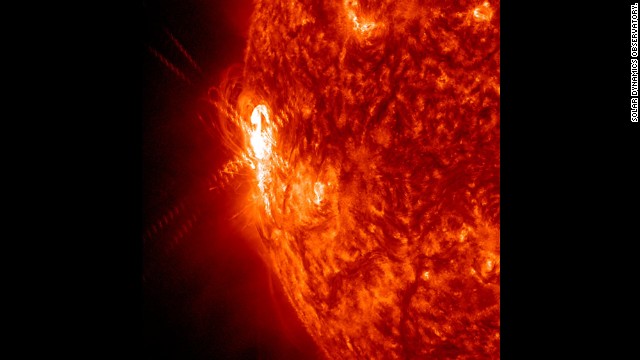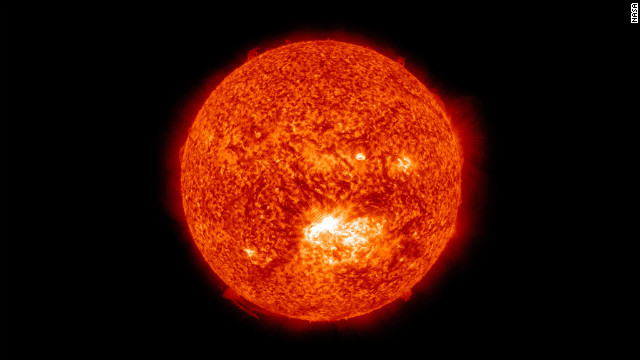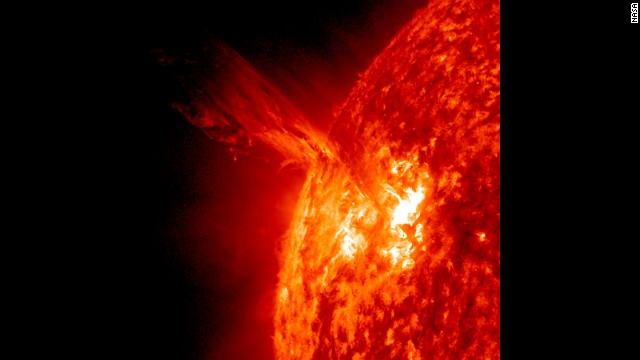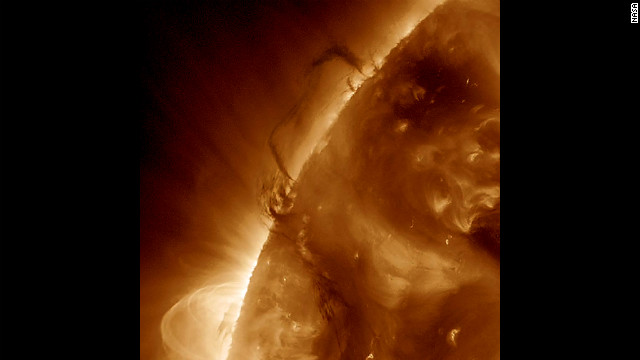A large active region is giving off warning signs that this could be the source of powerful solar storms. It has already shot off two smaller flares (Jan. 2, 2014) as shown here in a wavelength of extreme ultraviolet light.

- Space Weather Prediction Center watches skies for solar activity
Boulder, Colorado (CNN) -- From Earth, the sun appears as a constant circle of light, but when viewed in space a brilliant display of motion is revealed.
Flares that light up the galaxy and eruptions that can be as large as 30 times the Earth's surface occur regularly. During the peak of the 11-year solar cycle, these events can happen several times a day.
The flares and eruptions are collectively known as space weather and although they create dazzling visuals in space, it isn't just a harmless fireworks show for the galaxy. Each burst of energy can have a disrupting effect on systems we rely on every day.
With their headquarters next to the Rocky Mountains in the state of Colorado, a team of forecasters aims to minimize that impact.
"The Space Weather Prediction Center (SWPC) essentially watches the sun, watches for activity on the sun originating from sun spots," explains Bob Rutledge, Forecast Office lead.
"That's really where the magnetic fields of the sun poke through the surface and kind of hold that part of the surface in place allowing it to cool -- that's why it appears dark."
This image from the Solar Dynamics Observatory shows the sun on July 12, 2012 during an X1.4 class flare. The image is captured in the 304 Angstrom wavelength, which is typically colorized in red.

This image combines two sets of observations of the sun on July 12, 2012 from the SDO to give an impression of what the sun looked like shortly before it unleashed an X-class flare.

Gas rolls up and down the sun's outer layer, similar to the bubbles in boiling water. When the magnetic field around a sun spot breaks, magnetic energy explodes in the solar atmosphere like a pot boiling over.
The size and position of sun spots can give forecasters a clue as to when or where a solar flare may bubble up. They produce daily forecasts that are important to the industries most vulnerable.
"Space weather can have a variety of impacts across many different customer bases -- commercial aviation, precision GPS use, power grid operations -- all these are really critical," says Rutled
Active Region 1514 just could not contain itself as it popped off over a dozen flashes, minor eruptions, and flares over almost two days June 27-29, 2012.

Two areas of dark plasma that were close together danced and entwined with each other over a one-day period March 27-28, 2012. The dark plasma, seen in profile, was somewhat cooler and therefore darker than the material around it.












No comments:
Post a Comment